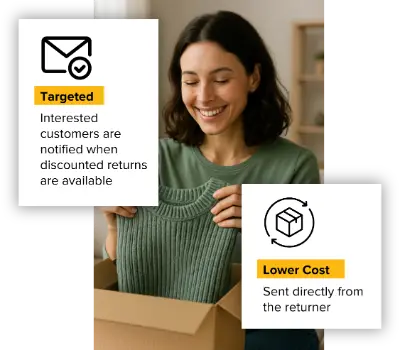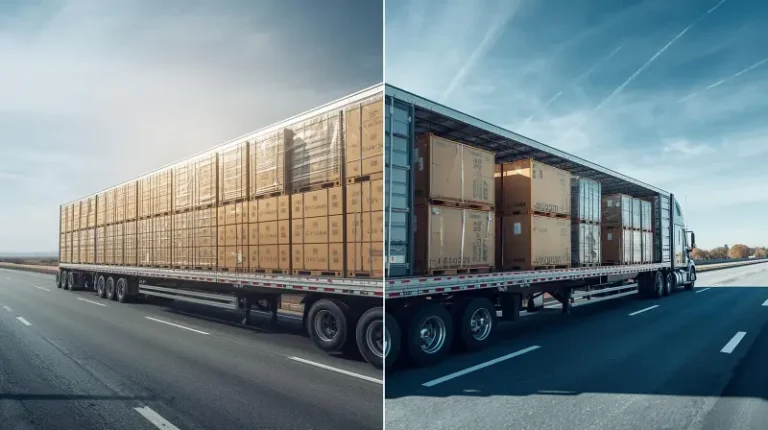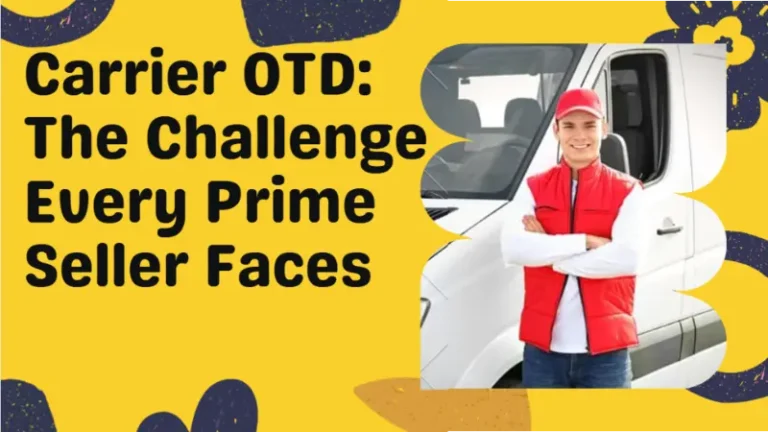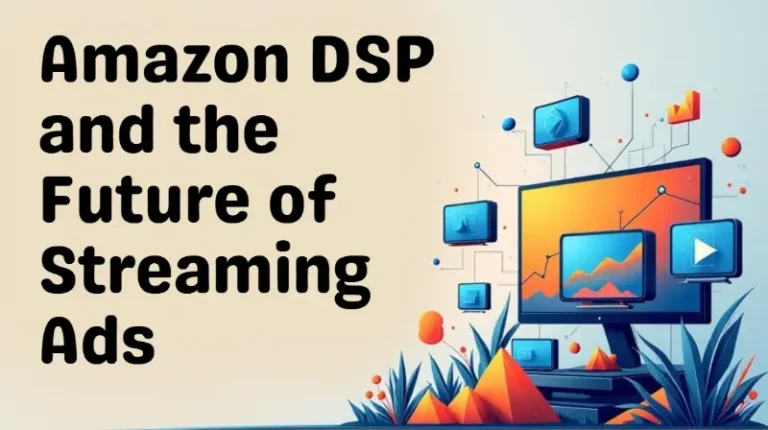3PL Fulfillment: Amazon’s Inventory Limitations & Impact on Ecommerce Sellers

Last updated on April 14, 2023

In this article
 28 minutes
28 minutes
Listen to podcast here.
Podcast: The Future of 3PL Fulfillment in the Face of Amazon Warehouse Distribution (AWD)
In a conversation between Manish Chowdhary, founder and CEO of Cahoot and Neil Twa, host of the High Voltage Business Builders podcast, the two discuss Amazon’s inventory limitations and the impact it has on ecommerce sellers. Amazon has different teams with different priorities, causing confusion among sellers who cannot rely on any one order fulfillment solution. The company has cut down on inventory shelving space for some ecommerce sellers while launching new services, such as Buy with Prime, which could pose a threat to marketplace delivery services like Shopify. Shopify recently banned Buy with Prime, which Manish argues cuts into the heart of revenue. To avoid being beholden to any order fulfillment service, sellers must have a backup that is not Amazon. The experts caution against putting all your eggs in one basket and encourage ecommerce sellers to move beyond Amazon if they want to grow their ecommerce brand.
Below is the transcript of their conversation, edited for clarity:
Neil Twa:
Welcome to the High Voltage Business Builders, a show where we interview entrepreneurs growing and scaling their income through e-Commerce and showing you the path to make your first or next million.
All right, Manish, thanks for joining the call, my friend, from Connecticut today. How is things out there on the East Coast for you?
Manish Chowdhary:
Things are a bit cloudy here, but it’s still a great day, and thank you for having me, Neil.
Neil Twa:
Yeah, it’s great to have you here, man. So, we’re talking a little bit about things that are obviously relevant to E-comm, but in different channels, not just Amazon. I know you handle multi-channel fulfillment.
Let’s talk a little bit about that, because I know it’s a big piece of what you do in your business model. Tell us what are you seeing, what’s most relevant right now. If someone’s listening to this and they’ve got a Dropshipping or an Amazon store or some other thing else, what’s something they should know right now that you feel is important for them to hear?
Manish Chowdhary:
Well, one of the things that… I just got back from Search Summit last week, you hear conflicting sets of information, right? I mean, Amazon is rolling out new services. You brought up a little while earlier, Amazon warehouse and distribution. So they’re ready to take on everything. Then I hear from a very large seller, very successful seller, just two days ago that their inventory limit has been cut to 1/3rd (of what it is presently).
Yeah, one side, Amazon is ready to take on everything you’ve got, and the second side is the people that are in need of that inventory today don’t have that. So Amazon has different teams working. You really can’t believe one thing or the other, because they’re all just simply trying to get in the limelight. So, it’s a lot of confusion out there for sellers.
Slash Your Fulfillment Costs by Up to 30%
Cut shipping expenses by 30% and boost profit with Cahoot's AI-optimized fulfillment services and modern tech —no overheads and no humans required!
I'm Interested in Saving Time and MoneyNeil Twa:
Yeah, there is definitely, because they said, “We’re going to do 5% of you only (whom they said they would reduce inventory for). We’re going to have to make some holiday changes, we got inventory issue.” Now if I just look at our group, our businesses and we come back, there was more than 5% of the people in our group who got that notification just within our group. So I’m like, “Well, I don’t think that was quite 5%.” I think they kind of just placated those numbers just a little bit.
So they killed it on one end by halving down the shelving space we had on one side of the house, and then they’d say, “Hey, well, we got this new Amazon warehouse distribution (AWD) thing, and you could have unlimited storage over here all of a sudden.” It’s kind of like, “Well, I mean, were you playing the shifting shelves game here?” What do you think is going on?
Manish Chowdhary:
Well, I mean, again, Amazon is a very large company. There are different product owners, each one has their own agenda, so they may have gotten certain amount of space allocated. There’s also Amazon launched Buy with Prime service that is probably also run by a separate group, that they’re ready to take on order fulfillment for Shopify merchants or just about anyone.
So, it is very unnerving if you are a seller like yourself or people in your group, that if you see your inventory limits cut down, what confidence, what trust would you have in other services? So one thing that we at Cahoot like to educate our sellers or give them advice on is that you’ve got to have a backup, and it cannot be Amazon.
Amazon cannot be Amazon’s backup. You’ve got to have an independent third party that has your interest in mind, that is going to help you navigate the turbulent Amazon waters, and that’s not going to end anytime soon. It’s not a Q4 issue, it’s not a Q1 issue.
As long as you play in the Amazon ecosystem, that will continue to remain a challenge no matter how large, how many services they roll out.
Neil Twa:
Yeah, it’s a very valid point, and I love the way you speak Manish, because you’re a very pragmatic guy. I can tell in the way you look at these things. Because obviously with adding the Buy with Prime button, it’s added on a whole additional line of sellers from Shopify and other stuff, which I don’t know if they were aware maybe of what that would do. I know a lot of people have suddenly implemented that. I know for sure they’re going to take over a lot of Shopify’s opportunity for marketplace delivery they were trying to bring up.
Manish Chowdhary:
Well, but Shopify just came out last week I think, and banned it. So Shopify has publicly gone on record to say that installing the Buy with Prime button is against Shopify’s terms of service. So there you have it. Shopify wants to ban Buy with Prime, Buy with Prime wants to get on Shopify. Nobody wants to take FBA forwarding. It’s a big challenge if you’re a seller, you just cannot be beholden to any platform centric order fulfillment option.
Neil Twa:
And there it is. So we talk about pros and cons, and we’re very open about both of those things with Amazon, we don’t want people to be Amazon channel locked. So you need to move a brand beyond Amazon if you start there and incubate it or if you’re off Amazon, obviously you need the combination of the multi-channel aspect really for E-comm today. But like you said, you can’t put all your eggs in one basket, and as soon as you have the opportunity to split out profits, you should move another channel, another opportunity. I didn’t actually hear that update on Shopify, so that’s interesting news. I can see why they would do it. The marketplace is getting extremely competitive, and that opportunity was going to cut into their delivery systems, they were trying to ramp up.
Manish Chowdhary:
Well, it’s not even delivery system. It cuts into the heart of their revenue.
Neil Twa:
Well, for sure, for sure. I mean, you can see why we do these kinds of things and have these kind of conversations. If you’re out here just trying to flounder around on your own. For us, having the experience levels we do, and you too it’s even confusing at times to try to rationalize this stuff in the middle of all the experience we have versus people who are just trying to get going. So if you’re new and you’re just like, “Okay, I got an Amazon channel, I don’t necessarily have a 3PL yet, or I’m looking to get one.” What are the top three things you want people to know when they’re looking for a 3PL company that they should consider? What are the things they should know about it?
Manish Chowdhary:
First and foremost, I think it’s very important to make data-driven decisions. A lot of sellers just simply reach out to 3PLs and we get many of those inquiries. “Give me a price rate card.” Most 3PLs specialize in something. Not everyone specializes in everything. There’s micro – What we call mom-and-pop 3PLs. These are one location, two location, 3PLs, and then there are chains, and then you have networks like Cahoot. So it’s very important for the 3PLs to understand what kind of products are they going to deal with, what’s the inbound and outbound frequency, what kind of services you’re expecting, what is most important to you if you’re simply looking for an FBA forwarding service, or are you looking for DTC fulfillment? What kind of products, because there’s the shipping cost.
I’ll give you a very simple example. You can get dirt cheap order fulfillment, let’s just say even in the hottest market, Southern California, let’s say dirt cheap storage. But if most of your orders are going to New York or the East Coast, you are going to pay Zone 8 shipping prices for moving that item from California to New York on an individual basis. So net net, you actually will lose money even though you thought you got a great deal. Those things are very important. If this 3PL is going to take one or two days extra to ship from a lead time or if they’re going to use downgraded services, that will take longer for the consumer to receive. All of those things are very important to understand upfront as to what are you trying to solve for. And that is one thing that is very important. At least at Cahoot, we don’t blindly hand our pricing because we don’t know if we are going to be the best fit and only information and data tells us whether we are going to be the right fit.
So I would encourage sellers to really think about – how many SKUs? What kind of orders are you fulfilling? The count of orders? Let’s do averages over the last six to 12 months to make sure what’s the typical inventory storage requirement? How long do you store that inventory for? And having all that information and what the shipping cost is going to be, because many 3PLs do not do that. They charge the shipping cost, so you could lose a lot of money on that front. And how does it compare to FBA trying to make any comparison with FBA? So you know exactly for what products you’re going to come out ahead, what products are going to cost more. Because we going to admit FBA is very competitive for Small and Light, very attractive. So anybody who tells you they’re going to beat FBA prices across the board, they’re most likely lying.
Looking for a New 3PL? Start with this Free RFP Template
Cut weeks off your selection process. Avoid pitfalls. Get the only 3PL RFP checklist built for ecommerce brands, absolutely free.
Get My Free 3PL RFPNeil Twa:
Yeah. Because of this infrastructure, their multi-channel services usually can win to some degree. You just have to look at it from a strategic perspective and not the lowest race to the bottom pricing. Because I know that’s what happens to a lot of those people with rate cards is they’re selling $10, $12 products and they’ve got razor thin margins and it’s hard to beat Amazon’s FBA pricing at that level because they’re already at razor thin and Amazon’s trying to beat all the competition for pricing. So you got to be smart about your numbers. And usually people who are just asking for rate cards don’t really know what their numbers are. And they may not even know what Zone 8 means if they’re listening to this. But guys by the way, that’s the farthest distance from one location to another at shipping costs.
If you’ve ever tried to ship something and like US Postal Service go down and look, they have a Zone card and you’ll notice some of the locations are some of the farthest away, and you got to be smart about where your sales are coming from. If you’re on DTC, it’s a little easier. You can do a quick analysis and see where’s the majority of my orders going to from people who are buying. On Amazon, you got to wait a little bit and figure out where Amazon’s distribution is sending all your products into which areas you’re getting the most sales from, which may take a little bit of time from the system. But obviously, Manish, you know your stuff. I mean, just listening to you for the last five minutes. You clearly understand this. What is your background in this business model?
Manish Chowdhary:
So I was involved with building the e-commerce platform before the word e-commerce platform was invented. This is going back to early 2000. I was involved with building one of the first Turnkey Shopping Cart Software long before Shopify existed. Magento wasn’t on the market at that time. So built a very successful Shopping Cart Software, Turnkey e-commerce platform as we see now. So I’ve seen e-commerce evolve from its infancy. And then went on to build another similar product, but it’s a full service mid market e-commerce order management system, inventory management system. So I’ve been dealing with online retailers, technologies God, for 22 plus years. So I’ve seen everything and just about anything. I’ve got deep experience with now logistics. I’ve got 10 US patents on business process, orchestration and collaboration. So a lot of experience in anything and everything to do with e-commerce and operations.
Neil Twa:
Yeah, no, that’s a very historic background. I mean, back to 2000, is post dot-com bubble. Did you get out of the bubble somehow into this or did you ride that out okay or what happened there?
Manish Chowdhary:
Yeah, I mean, I think we did phenomenally well because that was the time when e-commerce was just taking off. And I think some of the large, the eToys of the world, they pretty much laid the foundation for the SMBs. SMBs were getting on for the very first time, just like the pandemic did, brought in a ton of people who started to sell online. But in this case, there were businesses that were offline, the brick-and-mortar that suddenly saw themselves as an opportunity to sell online. And this is actually, I think this was before Amazon opened itself up as a marketplace. Amazon marketplace did not exist. Yahoo Shopping used to be the marketplace. May or may not remember that.
Neil Twa:
No, I do. But the eToys thing is taking me back in my brain for a second. I haven’t heard eToys in a long time.
Manish Chowdhary:
Yeah, so those were the early days. So I’ve seen the evolution of that. So I mean every time there’s a crisis as they say, or there’s a challenge, there’s an opportunity. I mean, right now we are going through some historic black swan event with the pandemic and so on, but I think there’s some great businesses that are going to emerge out of this. I mean, yes, for my own business, which is Cahoot, it’s an innovative peer-to-peer order fulfillment services network. For the very first time, if you are a merchant who has a warehouse, you have an opportunity to make money if you have excess space in your warehouse. This is something that did not exist. Similar to what Uber and Airbnb did in 2008 when the financial crisis hit. All of a sudden people were without jobs. So they were going and signing up to become drivers for Uber, which allowed Uber to offer low prices for short-term transportation, which really helped them take off.
Similarly, Airbnb also emerged during that time when people were trying to save on short-term stays. They don’t want to pay large, heavy amounts to the Hiltons and the Marriott’s of the world, and there was a great opportunity for them to monetize their spare bedroom. And so Cahoot is doing something very similar in the order fulfillment and logistics space. So if you have a warehouse and you have your act together and you’ve got spare capacity, for the very first time you can come to Cahoot, join our network and apply to become an order fulfillment partner and make some money.
Neil Twa:
So peer-to-peer order fulfillment services network, that’s new, that’s very innovative.
Manish Chowdhary:
Thank you. Thank you.

Neil Twa:
Yeah. Obviously your innovations and patents and other things have led you to some really new concepts. Where do you see that moving in the next year with some of the challenges around order fulfillment, longer shipping times? Where do you see that going?
Manish Chowdhary:
Yeah, I mean, I think that the order fulfillment companies should be embracing what I call merchant inclusive fulfillment. If you think about a merchant’s needs, a merchant wants to bring in inventory, whether it’s domestically or international. The inventory is going to come into one of the bigger ports. There are some of the less popular ports that I recommend right now. If you’re having trouble getting inventory to Long Beach or Oakland at New York, New Jersey, you can look into Charleston, you can look into Miami, you can look into some of the other ports that are less congested. I mean, I think merchants want a single provider that can handle their B2B, that they can stage their inventory and then drip it to FBA as needed for the items that make sense. They can do the order fulfillment for other channels, Shopify, Walmart, others, I know Walmart launched its Walmart fulfillment services.
Lot of sellers are not super excited about that. They still find that to be in early stages and infancy in its technology evolution. People are going and rushing to build new warehouses. But we believe that there are 2 million merchants in the US. Many of them do order fulfillment on their own, that there’s plenty of capacity available, just like how Airbnb helped unlock millions of rooms as opposed to going out and building new hotels in an already crowded space. When somebody builds a very expensive warehouse, they’re going to charge you something very expensive for their services because they got to recover their expenses. So Cahoot is very unique in that way to leverage existing assets so that we can get higher utilization for what already exists.
Neil Twa:
Fantastic man. And if I’m not wrong, it’s cahoot.ai, is that correct?
Manish Chowdhary:
Cahoot.ai, yes.
Neil Twa:
Okay. And when they show up, what should they expect to give you to get the right information necessary? And we’re talking about sellers who are already in the marketplace in one capacity channel or another, but we’re also talking about those who have additional warehouse space, maybe even other 3PLs who might want to utilize that space, if I’m hearing you correctly, can connect with you as well. Is that right?
Scale Faster with the World’s First Peer-to-Peer Fulfillment Network
Tap into a nationwide network of high-performance partner warehouses — expand capacity, cut shipping costs, and reach customers 1–2 days faster.
Explore Fulfillment NetworkManish Chowdhary:
That’s right. We have two parts of our network. The sellers that are looking to outsource order fulfillment, they can come to Cahoot. If you have a great deal, come out to Cahoot, let us reconfirm that you still have a great deal, no harm done. It’s something to be aware of. Or if you have one location, you want to add a second location because you’re getting orders from nationwide. We have the technology, the software that can make that happen seamlessly. And if you’re super happy with your existing provider, we are not looking to replace them or displace them. That’s just not the way how Cahoot operates. We would invite them to come join the Cahoot network so they can participate and they can stay part of it. Because if you have got a good thing going, we know we have the technology to glue it all together.
And on the supply side, if you are a warehouse that has excess capacity that you want to monetize, then you come join and apply to become an order fulfillment partner. And we invite 3PLs as well to come join as a fulfillment partner. Because let’s face it, let’s say you are an East Coast based 3PL, your customers, your merchants are demanding a location on the West coast. So rather than losing that client entirely, you can come and partner with somebody so you can keep that client and meet that client’s needs. Because if you choose to ignore that client’s needs, because to your point, Neil, Zone 8 shipping from New York to California Zone 8, that’s very expensive however you slice it. And even if your fulfillment providers rates are the cheapest, you are still going to come out in the red because shipping orders cross-country has two problems, higher shipping cost, and longer transit time.
It takes five days for the item to be delivered, sometimes could be up to six, seven days. So we invite both 3PLs and warehouses of capacity to come check us out, apply to become an order fulfillment partner, and for the sellers to look out and find a merchant inclusive fulfillment solution. You got to have a backup. And I’m talking about the seller, Neil, that I spoke with last week. Sellers in the Amazon space – they are plugged in, they’re super smart, you would know them, even they don’t have a backup. And it’s appalling to me that how can you put all the eggs in one basket?
Neil Twa:
Once you get to be a certain size – Risk management needs to be a big part of your operational component. I would be surprised that they didn’t have some of that in place, but I’m sure they could help you. You’re obviously got an innovative, unique idea for both seller and 3PL. And folks, if you’re listening to this, I would encourage you to check it out. The link will be in the show notes, go to cahoot.ai, check out what Manish is doing. Obviously, you can hear he’s a super smart guy who’s figured something out that’s really cool. It will benefit both you and the 3PL provider you might be using at this point. Guys, I would encourage you to go check it out and take a look at that if both, again, you’re a seller and a 3PL. Manish, any other final words of wisdom you want to leave on us today?
.
Manish Chowdhary:
Thank you, Neil. I mean, there’s one more thing in the words of Steve Jobs.
Cahoot has the industry-leading shipping software. So if you are not ready to outsource fulfillment and you have a warehouse, you do order fulfillment or shipping yourself, Cahoot can save you a lot of time in rate shopping. We did a side-by-side comparison between ShipStation and Cahoot, which is a leading product on the market. And of course, as they say, Cahoot came out 21 times faster, that’s just the technology that Cahoot has built that reduces human error. It reduces a human trying to compare UPS, FedEx, USPS rates, figuring out which one to pick. And rather than doing it one order at a time or applying any kind of crude rules, Cahoot’s technology automates all of it. So if you want many hours back in your day, and I kid you not, we have a client that was spending four hours on a Sunday away from their family printing labels so that they could ship those orders out on Monday and they could not fulfill Monday’s orders until Tuesday because they just did not have the capacity.
And so there’s some unique technology even on the shipping software front. If you can save three hours, four hours of labor a day that’s money back in your pocket to do some other things that are more revenue producing.
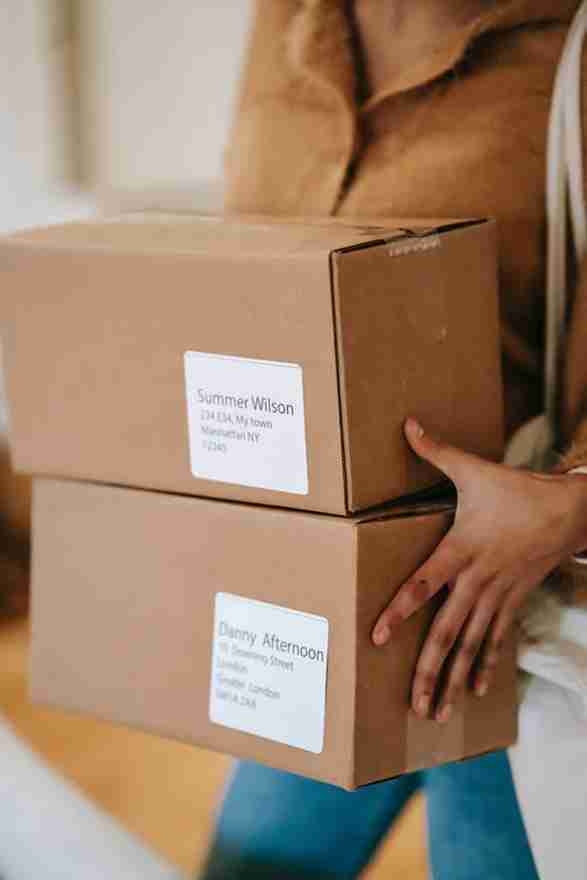
Neil Twa:
Very smart and interesting angle on that. Definitely. So a shipping station comparison is a very good analogy for what your software does and obviously it’s very powerful. We may have to check that out ourselves, for some of the projects we’re working on. Thanks for bringing that up, man. I appreciate your time today, sir.
Manish Chowdhary:
Thank you. Neil, anything else you’d like to cover?
Neil Twa:
Look, that’s good for me at this point, unless you have something else you would like us to know.
Manish Chowdhary:
No, I mean, I think just merchants should be aware that Amazon FBA has added peak fulfillment surcharge of 6 to 8% for the very first time. That’s I think getting rolled out on October 15th. That’s a fourth increase in FBA fees this year. I think in the first quarter they revamped the Small and Light pricing. April 28th they added 5% inflation surcharge. And then of course the storage triples in Q4, as you know. So I would encourage sellers to go check out their bills and to make sure that nothing in the Amazon FBA world remains as is. So be mindful of that as you’re calculating your profitability, how much you’re allocating to your advertising, return on advertising spend and all that good stuff. And some other big news, I mean, Pharmapacks the number one Amazon seller going out of business –
Neil Twa:
Yeah. Their margins were too thin. And I was just going to cover a little bit of that actually, because on the antithesis side of that, one of the third largest native acquisitions just occurred for a cosmetics company in a $630 million acquisition. So on the other side, you got to look at the differences between the two. Why did one go out of business, and why did one have such a tremendous exit? And then how to deal with the rising costs of obviously inflation or fees, obviously, as you mentioned are going up.
And that’s a good topic because I mean, you got to look at the value of the brand and the value of the products you’re putting into it. That’s one of the things we always drive out here. If you’re going to sell something for $30 or less on Amazon, you better have a very high margin on it or not sell anything less than $30, or you’re going to run into these kinds of really razor thinned margins where you might be making it great or it cost is good, and the product is growing, but all of a sudden that 5% surcharge or changes at this fourth quarter of the year slice your margins down to a dollar in profit, which is really no for a business model.
So we want to encourage everybody on the back of that to remember, keep your product profitability above $10, if not higher to $15 in that profit per unit for your products. If you can’t achieve that on your products currently, you need to get products in the market that will do that. That will raise with price, can raise retail price against inflation and market hedges or of course increasing costs and operations and logistics as we just spoke about, won’t impact you as greatly. Yes, they’ll impact you, but it won’t be devastating. And I know there’s a lot of sellers in the market right now that are going to face that coming into fourth quarter.
As you mentioned earlier, there’s opportunity in everything. For some of us, there’s going to be great opportunity priced correctly and in the profit margins we need, whose fourth quarter this year is going to be great. But I think there’re going to be a lot of sellers who are coming off of a COVID bump who still haven’t right sized their metrics or expectations and rising cost of inflations are going to hurt them in this coming quarter. And many of them may not be able to make it through the end of the fourth quarter, even though they should be doing really well.
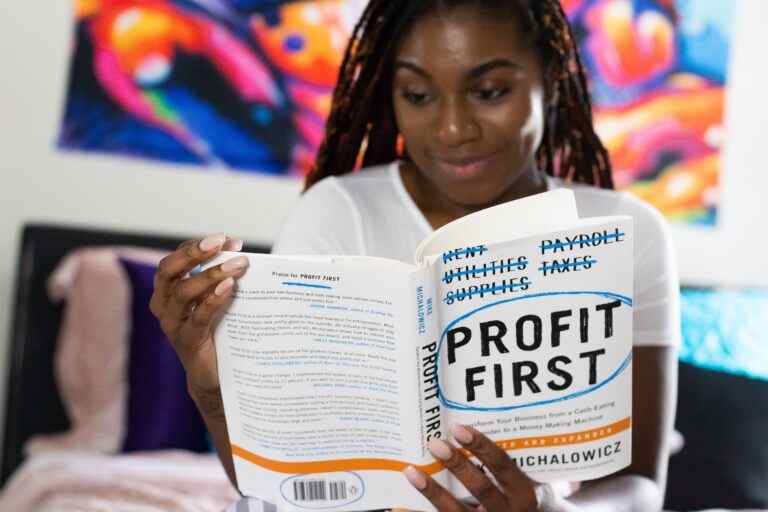
Manish Chowdhary:
Right. And business metrics have changed. I mean, if you’re looking to get acquired, that brings massive challenges of its own. Profitability is going to be key. The other advice that we are giving sellers is don’t wait for the last minute. Holiday shopping is going to happen earlier. There’s of course, a lot of talk about a second Prime Day. I mean, just think about it, why is Amazon considering a second Prime Day? It is because they want to push holiday forward. They want to push spending forward because they’ve got tons of excess inventory. We’ve heard from Walmart, lots of inventory challenges, aggressive discounting happening at Target. Their profit plummeted 89.9% year on year.
Neil Twa:
Yeah. Target is taking big hit, no doubt.
Yeah. And you mentioned Walmart – literally yesterday, I saw an article that said Walmart removed some of the major restrictions. It was making it very difficult for third party sellers to get approved on their platform. And in one day they had the largest spike in signups they’ve had to date since they opened the Walmart ecommerce platform. Because now you can actually get over there and open up your business, which is your name and your business in a few other details now. Whereas before it was highly restrictive. So there may be some additional opportunity for folks looking at Walmart because it has a market potential opportunity.
But you’re right, there are others that they’re suffering for a lot of different reasons. You bring up Target, but Target’s isn’t just operational or profitability. They’ve got other geo and political problems hitting them due to some policies and stuff that affected them, I believe. Just look at the market and the trends, and you can see what I’m talking about. But in terms of market share and stuff, the latest studies show that the even Walmart and Target combined still don’t make up Amazon’s 38% of market share. So if you’re going to play in the market, go with the juggernaut. Right?
Manish Chowdhary:
Certainly, certainly, but also diversify because if you’re successful at one marketplace, you want to dip your toe in the other.
Neil Twa:
Yeah, hints the Walmart point. You can get into Walmart a lot easier now due to those restrictions being lifted. Yep. So you should definitely consider it.
Manish Chowdhary:
That’s right. That’s right.
Neil Twa:
Yeah. Manish, thank you so much for your time, sir.
Manish Chowdhary:
Neil, thank you again for having me and pleasure speaking to your audience and if I can be of any help, please go check us out at www.cahoot.ai.
Neil Twa:
If you like this episode, please share it with people you think will enjoy it as well. Thank you for listening and be sure to tune in next week for a brand new episode of High Voltage Business Builders.
Turn Returns Into New Revenue
